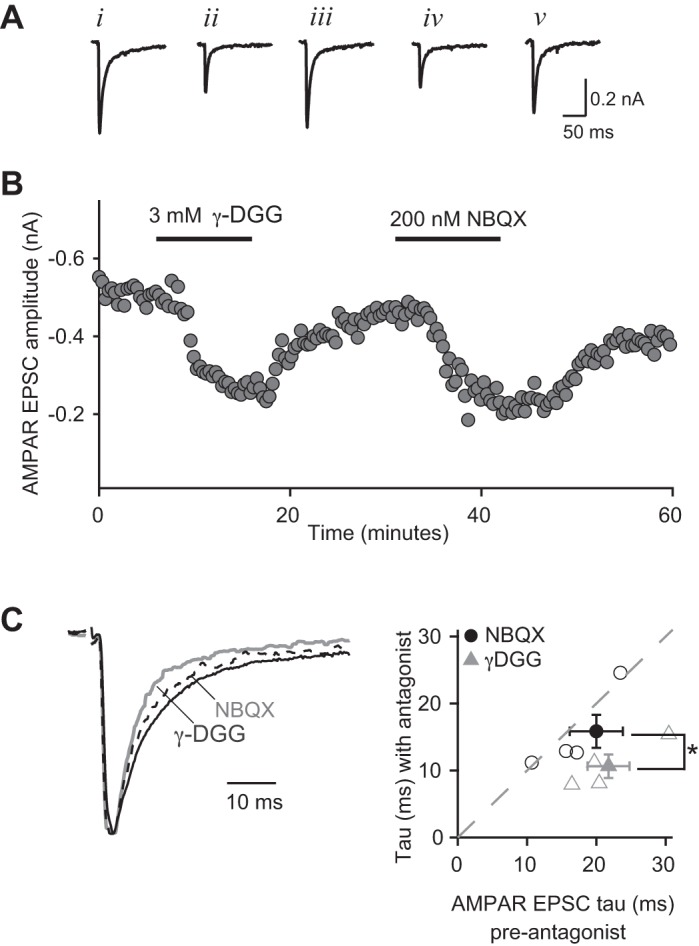Fig. 2.

γ-d-Glutamylgycine (γ-DGG) accelerates the AMPAR EPSC τ at the immature synapse. A: AMPAR EPSCs (Vh = −70 mV) recorded in the presence of CTZ (50 μM) and NMDAR antagonists [50 μM d-(+)-2-amino-5-phosphonopentanoic acid (d-AP5), 20 μM CPP] under control conditions (i, iii, and v) and in the presence of 3 mM γ-DGG (ii) and 200 nM 2,3-dihydro-6-nitro-7-sulphamoyl-benzo(f)quinoxaline (NBQX) (iv). Traces are the average of 5–10 consecutive responses and correspond to the peak amplitudes in the time course plotted in B. C, left: representative normalized AMPAR EPSCs before (black trace) and during (gray trace) application of γ-DGG or NBQX (dashed trace). C, right: scatterplot of AMPAR EPSC weighted τ shown as means ± SE (closed circles or triangles) before (X-axis) and in the presence of antagonist (Y-axis) with individual experiments plotted (open circles or triangles). γ-DGG (gray triangle): before τ, 21.8 ± 3.0 ms; in antagonist, 10.6 ± 1.8 ms; n = 4. NBQX: before τ, 20.0 ± 3.8 ms; in antagonist, 15.9 ± 2.5 ms; n = 5. Bath temperature: 35 ± 1°C. *P < 0.05.
